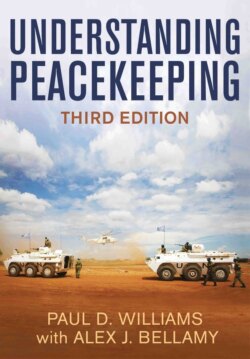Читать книгу Understanding Peacekeeping - Alex J. Bellamy - Страница 30
2 Who Deploys Peace Operations?
ОглавлениеPeacekeeping is often closely associated with the United Nations. Many analysts credit a Canadian diplomat, Lester Pearson, with the invention of peacekeeping because of his efforts to establish what is often considered the UN’s first such operation, the UN Emergency Force (1956–67). This was deployed to Egypt shortly after that country had been invaded by the UK, France and Israel in what became known as the Suez Crisis (see chapter 7). But the UN is not the only actor that conducts or authorizes peace operations. Rather, peacekeepers have been authorized by a range of international organizations and coalitions of states.
This chapter provides an overview of these different types of peacekeepers. In doing so it shows that, although the UN has deployed more peacekeeping operations than any other actor and enjoys the most international legitimacy when doing so, it does not have a monopoly on peace operations. The first section therefore summarizes how we define ‘peace operations’ and explains the universe of cases from the end of the Second World War until the present day. The next sections then analyse some of the general characteristics of states and international organizations acting as peacekeepers. We devote most space to summarizing the legal, bureaucratic and financial frameworks of the UN as the most significant peacekeeping actor. The final section describes the trend towards ‘partnership peacekeeping’ – situations where collaboration occurs between two or more multilateral institutions and/or various bilateral actors in the same mission theatre. This has become a more prominent part of the global peace operations landscape, especially in Africa and Europe, and has raised some important new opportunities and challenges for the UN.
